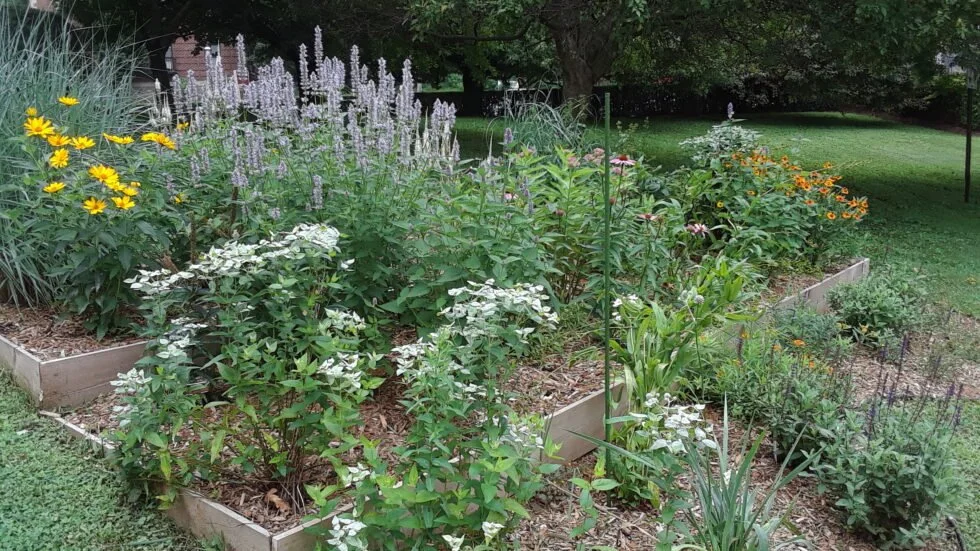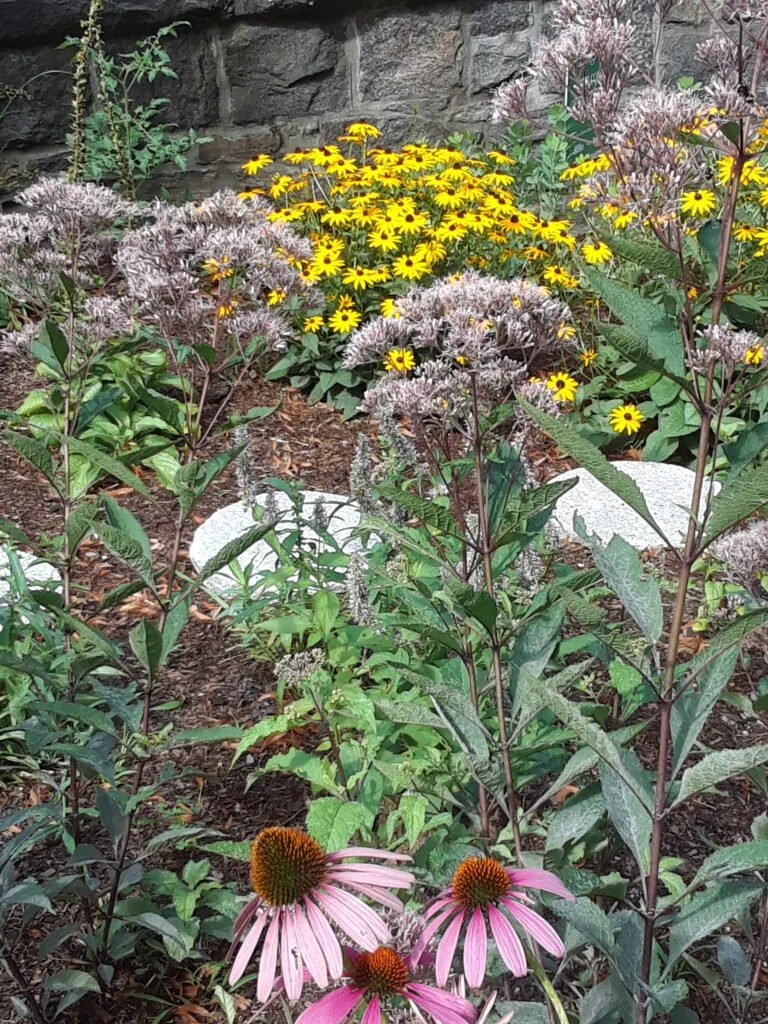IN 3 EASY STEPS
Create a Pollinator Garden
Our gardens add natural beauty with native plants that nurture and shelter threatened pollinators — bees, butterflies, beneficial insects and birds. You can do the same at home, no planting is too small to help. Any garden or planting that is pesticide free and provides food and shelter for wildlife will make a difference. If you don’t have garden space, you can plant a planter or install a native shrub or tree!

1.
CONDUCT A SITE ANALYSIS
The first step to create a garden is to assess the qualities of your garden site to determine which native plants will be most successful there. By practicing “right plant for the right place” you will set yourself up for success. Consider the following:
Sunlight: How much sun does your garden site get? Full sun is 6+ hours per day, part sun is 3-6 hours, and less than 3 hours is full shade. Note that the sunnier the site, the greater diversity of plants it will support.
Soil: If possible test your soil to determine its characteristics: composition (sandy versus clay), ph balance, as well as nutrient levels. Use only organic compounds, such as compost and mulch, to enhance your soil. Here’s a free and easy diy test you can do at home. Read more
In depth testing can be done very reasonably at Cornell Extension Read more
Moisture levels: Is your site naturally wet or dry? Do you need drought tolerant plants?
Wildlife: Consider wildlife such as deer and rodents. If these animals visit, opt for deer resistant plants and organic deterrents such as a liquid fence.
Aesthetics: Native pollinator gardens can be designed to look more formal by keeping low growing plants around the perimeter. Think about what height of plants you want in your space, there’s a diverse selection to choose from.

2.
PREP THE SOIL
Soil prep can be done in spring or fall. Here is a simple guide for prepping an area in the spring for spring planting that is quick and easy. Read more
If you prep your garden plot in the fall or have more upfront time you can use the lasagna gardening method which creates healthy soil without tilling. Read more

3.
PlanT NATIVE
Native plants are the linchpins of our ecosystems. They feed the insects who in turn feed the birds who feed other animals and humans — the web of life. Many plants in garden centers are non native and break this food chain. You can do your part by planting at least 70% native plants on your property. You will save time, money and help to reduce greenhouse gasses by planting low maintenance native plants. When shopping ask for neonic free plants. Neonicotinoid pesticides are systemic pesticides that harm pollinators and birds. Here’s a resource page for native plants and where to source them… Read more
Plant in driftS
Plant Larval Host Plants for Butterflies and Moths. Without host plants for butterfly larvae (caterpillars) to eat, there will be no butterflies! So don’t forget to provide this vital food source. Many butterfly larvae can only feed on one or two specific host plants—particularly native trees, shrubs, and perennials that are vital to their survival. Read more
Host Plants
Pollinators are more likely to find plants in gardens that provide larger drifts of color. When you purchase plants, get at least three or more of one kind if you have room and plant them near one another. Plants of varying heights planted close together will form a weed barrier far superior to a bed of mulch.
Our Gardens
Thanks to the tremendous support of our community — aided by funding through Friends of Warner Library — TEAC volunteers and the Tarrytown Parks and DPW staff have created a variety of vital Pollinator Pathway gardens in the heart of the Village. These gardens provide much needed habitat and sustenance for pollinators and birds.





